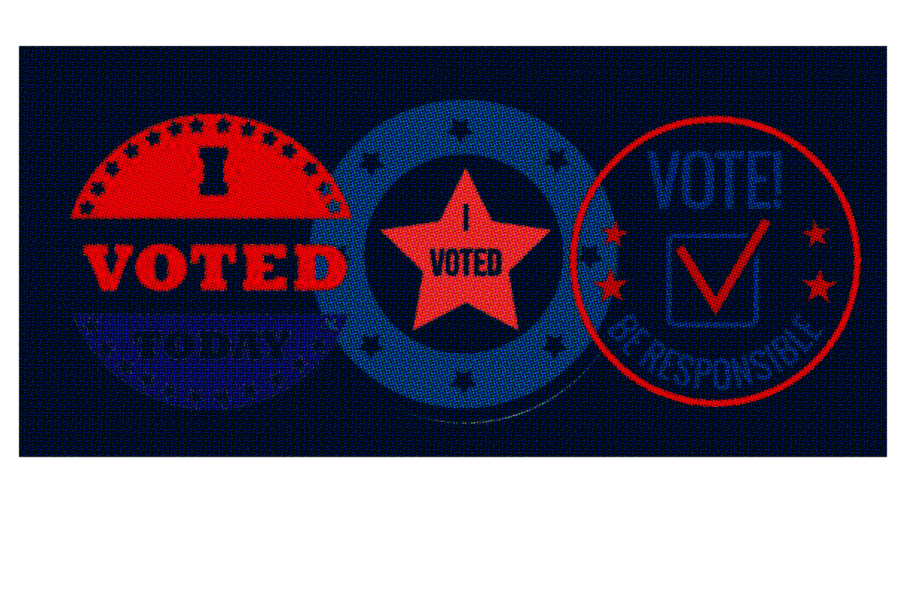A Young Population with Low Voter Turnout
August 27, 2019
Utah is one of few states with a primarily young population. The amount of young voters who fill out ballots each election, however, happens to be a very small percentage. National Voter Registration Day — which falls on Sept. 24 — and campus initiatives carried out by The Andrew Goodman Foundation and ASUU want to reverse the low turnout trend and encourage students to vote in upcoming elections.
For the 2020 presidential election, voter participation is projected to swell high enough that it could be the biggest turnout in a century. Money is not the only defining characteristic of this election — it is also key for candidates from both main political parties to attract all types of voters, including the youth.
AGF has a chapter on campus through its relationship with The Hinckley Institute. Since its founding in 1966, this organization has continued to commemorate Goodman’s work after he volunteered to register black voters during the civil rights movement. (Goodman was killed in 1964 by the Ku Klux Klan.) Currently, the group focuses on registering students in droves and wants to cement the political importance of voting.
Last fall in 2018, AGF registered over 300 student voters and 2,800 students through the University of Utah’s first polling location on campus for the midterm elections. According to previous coverage by The Daily Utah Chronicle, there has been a voting center for presidential elections since 2008. It is still yet to be confirmed if there will be a campus polling location for Salt Lake’s mayoral race.
ASUU has its own dedicated student board to ramping up voter registration and making sure students understand the importance of engaging in both municipal and national elections. They are called the Governmental Relations board, and they directly handle civic events and opportunities to try to create a campus culture where all different types of voters, regardless of party ideology, are encouraged to participate in political engagement.
The board’s director, Sierra McNeil, could not be reached at this time.
In a nationwide map of the 2018 midterm elections by The Center for Information and Research on Civic Learning and Engagement, young voter (ages 18-29) turnout rates between the 2014 and 2018 midterm elections in Utah doubled from an estimate of 8.1% to 16.8%. On a larger scale, the National Study of Learning, Voting and Engagement reported that, at the 1,000 participating academic institutions, 48.3% of all students voted in the 2016 presidential election.
Political influence coming from the young voter demographic holds a larger impact than most students realize. Issues and its supplementing discourse regarding the environment, affordable housing, income inequality and energy policies are largely determined by who is elected.
Jim Dabakis, a former Democratic state senator and recent candidate for Salt Lake’s competitive mayoral race, thinks youth participation is vital to ensure responsible elections are held. Despite the presumption that he would be the frontrunner, he did lose the mayoral race by 421 votes to state Sen. Luz Escamilla. Dabakis remains unimpressed by national and campus efforts to encourage young voters to cast ballots on a regular and sustainable rate. Instead, he finds these initiatives to be coddling and devoid of emphasizing that voting is a responsibility as a member of the country.
“It’s time to step up, it’s your country. You’re the ones that are going to inherit this land,” he said. “And frankly, it’s not going that well.”
According to an article by Slate, voter apathy and disengagement are still leading factors of why young people stay home on election day or fail to register, but the article does not address the other important explanations of why it’s hard to encourage a large flow of the youth demographic.
Students, particularly those from out of state, deal with a slew of problems that tie into registering to vote. Students that move around different addresses frequently and are less likely to own a driver’s license encounter substantial obstacles to successful voter registration, which dramatically impacts voting habits for this demographic.
“Young voters don’t think their vote makes a difference,” said Jonathan Onaygo, a sophomore at the U. As a registered voter, he also believes that in order to encourage students to cast their ballot, candidates need to listen to their voices deeply and seriously. “People will vote for people who benefit them.”
Many political candidates and parties are aware of the large ideological impact young people can hold in an election. A notable example of rallying the youth that has been seen throughout social platforms was Hillary Clinton’s 2016 campaign. Referencing the popular summer mobile game, “Pokemon Go!” in one of her speeches, she encouraged potential student voters to “Pokemon go to the polls.”
“Be involved with us once every couple of years to take a few minutes to vote,” Dabakis said. He says that if the youth doesn’t engage with the political system every election and then vocally criticize the elected candidates, “we deserve Donald Trump and we deserve the corporations taking over.”









Philip Lee • Aug 30, 2019 at 2:22 pm
Thanks for the above comment, I had a nice laugh.
Michael Turner • Aug 27, 2019 at 7:29 pm
What do we expect when this generation has grown up on a diet of cynicism fueled by parent(s) who can’t seem to keep it or each other together, yet criticize the failings of the the politicians and the system and everyone else around them? How many of this generation were taught civics in the HOME? Most can’t even find the USA on a world map–and they don’t care! How many are taught that with the great rights we enjoy we have responsibilities that come with them? School, even twenty years ago, did a dismal job of that. How many of them are taught to appreciate the incredible freedoms we enjoy here? The privileges we have? The abundance? We live better than any emperor in history, yet we’re too busy staring at our phones, and griping about how oppressed we are to notice.
We are late in the cycle predicted at the outset of this country (If you want to see it in art, the series is five paintings called The Course of Empire by Thomas Cole ). It begins as a promised land, a wilderness. Industriousness, pioneering, and morality make it great (that’s our history).. Then, hubris sets in (especially after several highs in armed conflict). Then children of that generation become spoiled, self absorbed, and myopic (read: entitled). Eventually, chaos (school shootings are a symptom) and riots take over as society tears itself apart. Finally, all that is left is the wilderness again with the wastes and ruins of a once mighty people. Yet we are so arrogant that we think it won’t happen to us.
“It’ll be different this time!” we’re reassured.
Sure it will…